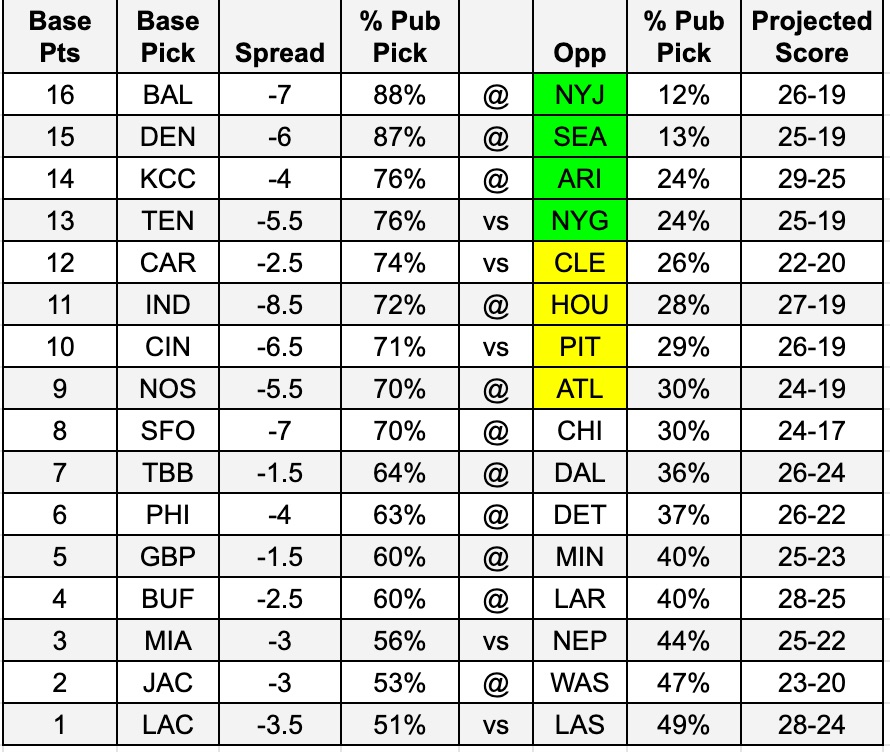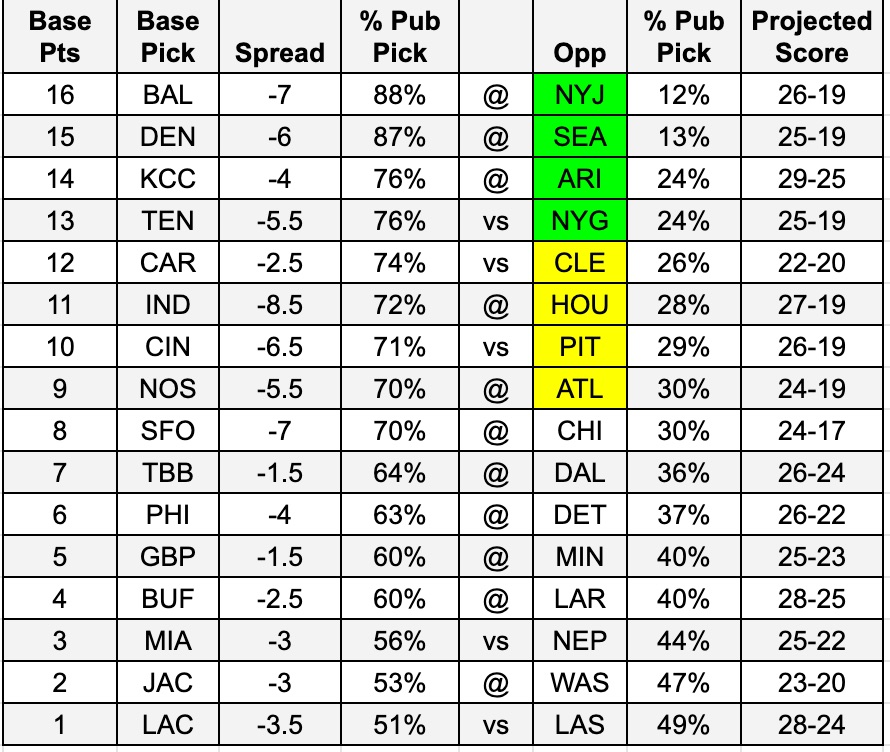Picking a confidence pool against the spread is the same as the confidence pool picks we know and love — with one minor difference. Instead of picking who wins the game outright, you pick who wins the game against the spread.
The main difference between “Against the Spread” picks versus “Straight-up” picks is that the favored team has to win by more than a certain number of points (the “Spread”) in order to count as a win. For instance, if the Packers are favored by seven against the Bears, they would need to win by more than seven in order for it to count as a win against the spread. If the final score is 31-10, it would count as a win for the Packers. If the score is 16-10, then it would count as a loss against the spread. If the Bears won, that would count as a loss.
So how would the strategy work for this little nuance?
It actually makes things a little simpler. With a normal confidence pool, we need to figure out how likely one team will win. With a point spread confidence pool, the key difference is that the spread makes each game about fifty-fifty. There may be subtle reasons why it’s not fifty-fifty, but it makes for a good start; this is a normal confidence pool except for all of the games being a 50-percent win probability.
So how do you pick, when assuming every game is fifty-fifty and essentially a coin flip? The answer lies in taking the opposite approach. If one hundred percent of people take heads and it’s a fifty-fifty proposition, you should take tails. 50-percent of the time you’ll end up in first place; the other fifty-percent, you’ll end up in last place. Over the long-term, you’ll wind up with the same score because probabilities are the same. But in the short-term, you’ll win your share of weeks.
How do we assign confidence? We assign the base picks according to how much the public is picking each team (not with win probability since it’s essentially fifty-fifty).
Here’s the chart that Premium Members get: (sign up for a Premium Membership)

The chart is sorted by how much the public is picking each team: Highest picked to lowest picked. “Base Points” is how many points are assigned to this matchup. “Base Pick” is the pick with the least risk (you’ll mostly be going with the crowd). Colors show which picks are upset picks (green, higher risk higher reward; yellow, medium risk medium reward).
Go high on confidence and pick the lowest percentage teams (our colored picks). As for how much you should pick against the crowd, you’ll need to get a feel for your league and see how contrarian it is. If people pick against the crowd then you should do so as well. If people pick with the crowd, then go with the crowd. Also, if you’re high in the standings, pick less against the crowd. And if you’re low in the standings, pick more against the crowd.
Our risk picks table gives you some suggestions, along with suggested picks if your pool doesn’t use confidence points:

Hope this helps! Of course, feel free to tweak it a bit and go with your own favorites. That’s what makes it fun. Good luck!

I’m confused with the light green and dark green in this new layout. If I pick the light green which is a higher risk, I assume, would you change the base points value and move them down or would you keep them at a higher base point?
I’d keep them at the highest points. That way if they hit, you get most bang for your buck.,